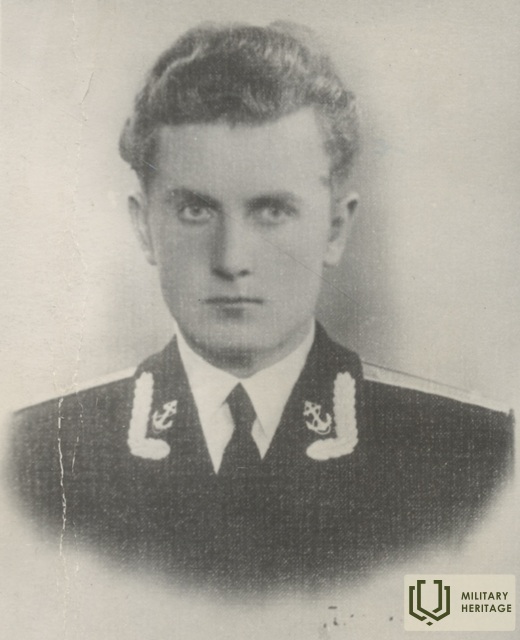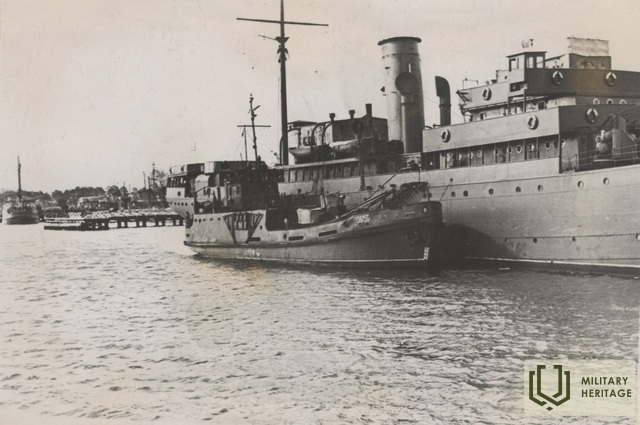The story of one escape from the Soviet Union

A story worthy of a novel and a movie.
Jonas Pleškys was born in 1935 into a family of landless peasants. In 1946, Jonas's mother died of tuberculosis and his father married a woman from a family that owned 40 hectares of land. In the Soviet understanding, this was already bourgeois. His stepmother's family also had connections with Lithuanian partisans who fought against the Soviets. The further story is completely predictable. In 1948, the Pleškys family was deported to Siberia. Jonas was also supposed to end up there, but it is said that his father managed to push Jonas and his other two children off the train carrying him to Siberia. In 1952, Pleškys was expelled from the pedagogical school in Telšiai for writing notes with anti-Soviet content. He continued his studies at the Telšiai gymnasium, joined the Komsomol. He tried to enter the Kaunas Polytechnic Institute, but was not accepted because his parents were "politically unreliable" exiles. In 1954, Pleškys was drafted into the Soviet Army and began service in the Navy. After graduating from military school in 1959, he became a submarine navigator and served briefly on a submarine. Later, he was appointed captain of a barge that serviced military ships. Pleškys received the rank of lieutenant. In early 1961, he married.
On April 6, 1961, his ship set sail from the port of Klaipėda to a landfill to dump chemical waste at sea. There were 8 or 9 crew members on board. Taking advantage of a storm and secretly from the crew, Pleškys changed the ship's course, directing it to the Swedish island of Gotland. Approaching the shores of Gotland, he boarded a lifeboat with another Lithuanian crew member and swam to shore. After disembarking on the island, Pleškys requested political asylum (his fellow passenger, another Lithuanian, refused to request asylum). During interrogations by the Swedish police, Pleškys stated that "life in the USSR was unbearable" and that "he could not live the rest of his life in a world of lies."
Pleškis' ship was returned to the Soviets a few days later. Pleškis himself remained in the West. On August 29, 1961, the Baltic Fleet Military Tribunal sentenced Pleškis to death in absentia. He lived in fear of Soviet revenge for the rest of his life (as an officer he knew Soviet secrets).
Pleškis was taken over by the US CIA. He had to prove to them that he was not a double agent working for the Soviet KGB. Little is known about the fugitive's later life, the CIA files on Pleškis remain classified. He received a US passport under a new false name, Jonas Plaskus. He worked in a submarine repair shop, taught the basics of computer programming at the University of Washington, worked in a bank in San Francisco, etc. In 1979, Pleškis retired to the mountains of Mexico and lived in a cabin for three years, growing his own food. It is said that this was the only place where he could feel safe from the Soviet KGB.
In 1992, the Supreme Court of Lithuania overturned Pleškis' death sentence, allowing him to briefly return to Lithuania. He died in the United States that same year.
It is believed that the story of Pleškis and the 1975 mutiny of Captain Valery Sablin on the Soviet Navy frigate Starazevoi inspired Tom Clancy to write the novel The Hunt for Red October in 1984. The novel tells the story of Captain Markos Ramius, a Lithuanian-born man who is disillusioned with the Soviet system, and his attempt to escape to the United States on the Soviet Union's most advanced ballistic missile submarine. In 1990, a Hollywood film of the same name was made based on the novel.
More information sources
- "Jonas Pleškys", in: Wikipedia. The Free Encyclopedia , updated 2024-11-18, online access: https://en.wikipedia.org/wiki/Jonas_Pleškys#cite_note-vysni-4 .
- Aras Lukšas, "In Search of a Lighthouse of Freedom", in: Lietuvos žinios , 2013-04-12, available online: https://luksasblog.wordpress.com/2013/04/12/ieskojes-laisves-svyturio/ .
- "Officer Jonas Pleškys, who drove a military barge to the shores of the island of Gotland and fled to Sweden", in: Archive of digital images preserved by the Lithuanian Special Archives , available online: https://lyavaizdai.archyvai.lt/vaizdai/3/p7890/doc8593 .




